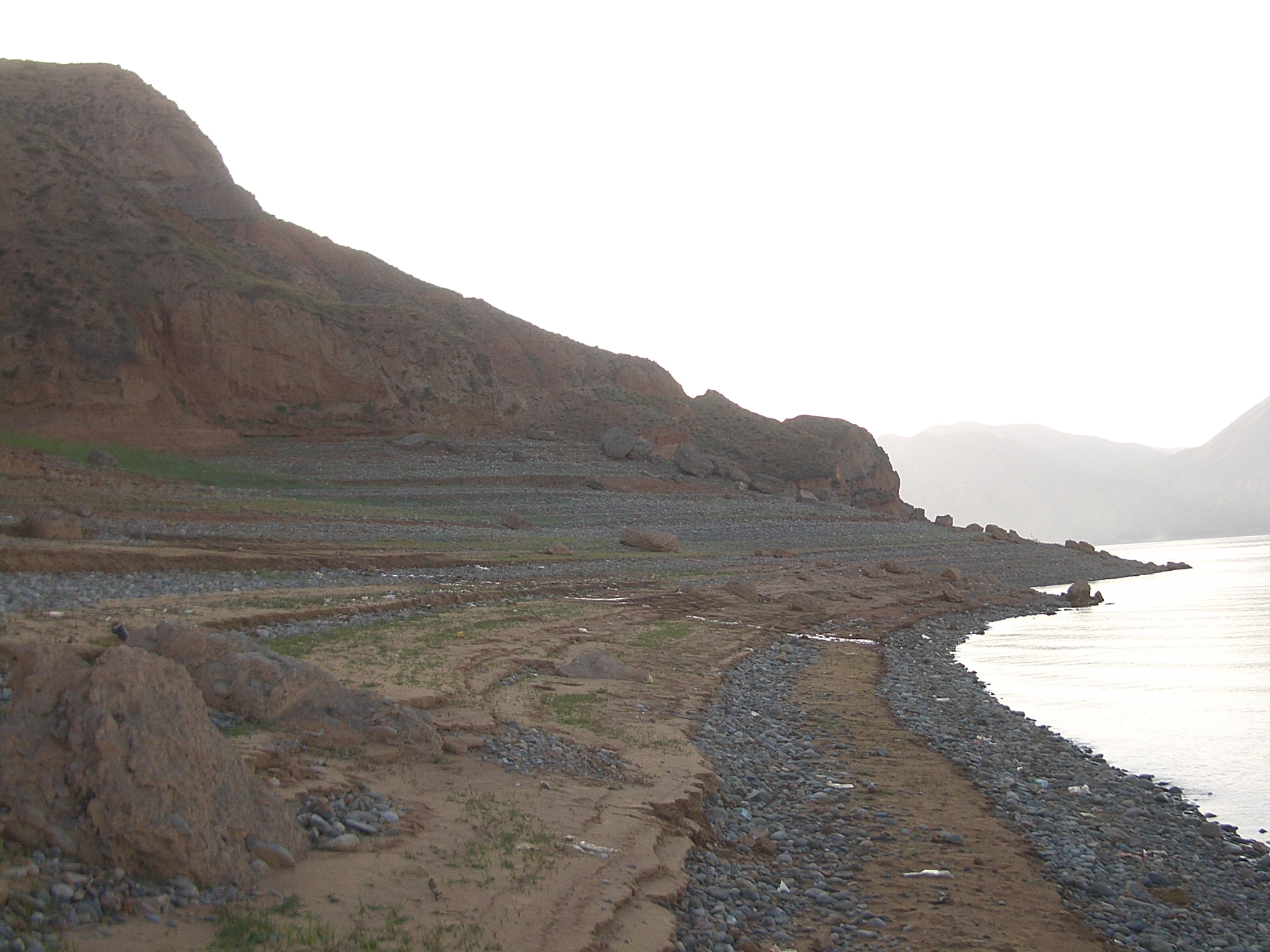Liujiaxia Dam on:
[Wikipedia]
[Google]
[Amazon]
The Liujiaxia Dam () is a major hydroelectric dam on the upper
 In 1955, just a few years after the creation of the
In 1955, just a few years after the creation of the 郭沫若咏《满江红》肖华赋五律 咏赞刘家峡
(Go Moruo's "A trip to Liujiuxia", rhymed on the '' Man Jiang Hong'' pattern.)
The reservoirs created by the three-dam cascade (also including Bapanxia Dam (1968-1975) farther downstream) displaced numerous local farmers. The three reservoirs flooded 118,229 (7,881 hectares) of farmland and displaced 43,829 residents, primarily in Yongjing County.Jun Jing (1998), pp. 71-73 The compensation payments to the farmers affected by the Liujiaxia Dams reportedly averaged 364 yuan per person (but in reality may have been even lower), and were grossly inadequate. It is said that the residents received lower compensation amount than they could otherwise because in 1958, during the Great Leap Forward, when the Yanguoxia project started, they understated the value of their assets, as they were afraid to be classified as "rich peasants", i.e. class enemies.Jun Jing (1998), pp. 76-77
Yellow River
The Yellow River, also known as Huanghe, is the second-longest river in China and the List of rivers by length, sixth-longest river system on Earth, with an estimated length of and a Drainage basin, watershed of . Beginning in the Bayan H ...
, in Linxia Hui Autonomous Prefecture
Linxia Hui Autonomous Prefecture ( zh, s=临夏回族自治州 , t=臨夏回族自治州 , p=Línxià Huízú Zìzhìzhōu, Xiao'erjing: ), formerly known as Hezhou (河州) and Baohan (枹罕), is located in Gansu, Gansu Province, south of the pro ...
of China's Gansu
Gansu is a provinces of China, province in Northwestern China. Its capital and largest city is Lanzhou, in the southeastern part of the province. The seventh-largest administrative district by area at , Gansu lies between the Tibetan Plateau, Ti ...
Province. The dam and its hydroelectric facility (Liujiaxia Hydroelectric Station, ) are located in Liujia Gorge, or ''Liujiaxia'' (), just downstream from where the Tao River flows into the Yellow River. The site is on the eastern outskirts of Liujiaxia Town. Since Liujiaxia Town
A town is a type of a human settlement, generally larger than a village but smaller than a city.
The criteria for distinguishing a town vary globally, often depending on factors such as population size, economic character, administrative stat ...
is the county seat of Yongjing County, it is often marked on less detailed maps simply as "Yongjing".
The Liujiaxia Reservoir () formed by the dam is the largest body of water within Gansu. The primary purpose of the dam is generating electricity; in addition, it is used for flood control, irrigation, and "ice flood prevention". The dam's location is about west-south-west (or upstream) from the provincial capital Lanzhou.
Liujiaxia Dam is a concrete gravity dam high and wide on top. The main section of the dam is long; including auxiliary sections on both sides, the length totals .
The power plant has 5 generators with the total installed capacity of 1,225 MW. When it became fully operational in 1974, it became the country's largest hydroelectric power plant, and remained so until the 1980s.
History
 In 1955, just a few years after the creation of the
In 1955, just a few years after the creation of the People's Republic of China
China, officially the People's Republic of China (PRC), is a country in East Asia. With population of China, a population exceeding 1.4 billion, it is the list of countries by population (United Nations), second-most populous country after ...
, the Communist government announced a large-scale program of hydroelectric dam construction on the Yellow River
The Yellow River, also known as Huanghe, is the second-longest river in China and the List of rivers by length, sixth-longest river system on Earth, with an estimated length of and a Drainage basin, watershed of . Beginning in the Bayan H ...
. According to the plan, a dam was to be built in each of the Three Gorges of the Yellow River: Liujia Gorge, Yanguo Gorge, and Bapan Gorge. The detailed geological investigation of the area, to choose the most suitable site for the dams, started immediately.
In 1958, construction work started on the first two dams, both located in Linxia Hui Autonomous Prefecture's Yongjing County: the 57-meter high Yanguoxia Dam (in Yangou Gorge, downstream from Liujiaxia) and the 147-meter-high Liujiaxia Dam in Liujia Gorge. While the smaller Yanguoxia Dam was completed in 1961, the work on Liujiaxia Dam itself was suspended in 1961-63, and the dam itself was only completed in 1969. The five generators were brought into service, one after another, between 1969 and 1974.
Hu Jintao, then a young engineer, joined the project's staff in 1968."临夏旅游" (Linxia Tourism), published by Linxia Hui Autonomous Prefecture Tourist Board, 2003. 146 pages. No ISBN. Pages 26=27. Guo Moruo visited the site in 1971 and wrote a poem on the occasion.(Go Moruo's "A trip to Liujiuxia", rhymed on the '' Man Jiang Hong'' pattern.)
See also
* List of power stations in ChinaReferences
{{Yellow River dams Dams in China Buildings and structures in Gansu Hydroelectric power stations in Gansu Dams on the Yellow River Linxia Hui Autonomous Prefecture Dams completed in 1969